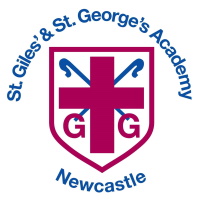English
Reading
Whilst some reading strategies are used more often to teach emergent reading (such as phonics), the academy recognises that learners may require a blend of different strategies in order for children to progress
Individual Reading and Group Modelled Reading
- At the learning to read stage, teachers and support staff may listen to children read individually or as part of a group of similar ability children, if the child requires more focused support in applying their phonics.
- Texts are chosen from the school’s phonics book bands and are at the instructional level for each child
Individual and group modelled reading will be used to:
- Provide a context for the teacher to teach common exception words, decoding skills, use of picture clues and use of context to support prediction;
- Provide an opportunity for child to consolidate his/her early decoding skills;
- Monitor the application of reading skills of the child.
Focus on developing fluency in reading
Enable teachers to model the skills and strategies used by effective readers.
Ensure that the mechanics of reading are being taught explicitly to the children (A combination of phonemic awareness, word analysis, phonics and sight words are key principles that make the reading process both meaningful and manageable for young children.)
Independent Reading (Read and Relax)
As pupils reach the ‘reading to learn’ stage and are confidently decoding and answering simple comprehension questions, then they will also be encouraged to read independently. In KS2, this reading takes place in the form of Accelerated Reader.
Independent reading will be used to:
- Promote enjoyment of reading;
- Promote the development of independent learning strategies;
- Provide a context for the application of skills and knowledge about reading.
Whole Class Reading
- Shared reading takes place in various forms across all ages:
EYFS – Reading is a whole-class learning experience based on a shared text. These texts provide the theme for continuous provision and the adult-led activities. Through these experiences children develop their understanding of language, characters, settings and simple story structures, which may include repetition.
KS1 and KS2– Reading takes place within the Whole Class Reading session, using their focus text for that half term. Children access the text through copies and the use of the interactive whiteboard. The children’s reading has a purpose, such as exploring characters, plot, making simple predictions and developing vocabulary further. The texts used in shared reading are linked to writing activities.
WCR across all stages will be used to:
- Demonstrate how to read a wide variety of different genres and text types.
- Demonstrate that reading is a pleasurable experience;
- Give access to challenging texts for all pupils;
- Focus on developing the comprehension skills of the children
- Focus on language development through orac
Handwriting
Handwriting is a taught skill that develops at different rates for different children. All of the teachers in our school put a priority on teaching handwriting and have high expectations for handwriting across the curriculum. Our school uses Penpals for Handwriting to ensure that:
- The importance of handwriting is recognised and given appropriate time.
- The progression of handwriting is consistent across the school.
- Handwriting is acknowledged to be a whole body activity and emphasis is placed on correct posture and pencil grip for handwriting.
- Expectations of left-handed children are equal to those of right-handed children, and appropriate advice and resources are available to ensure that they learn to write with a comfortable, straight wrist.
- Handwriting is linked into grammar, punctuation and spelling in order to practice and contextualise all of the transcriptional and stylistic skills for writing.
- Children learn to self-assess their own writing and develop understanding and responsibility for improving it.
- Children learn to write in different styles for different purposes such as print for labelling a diagram, illustrated capitals letters for creating a poster, swift jottings for writing notes, making a ‘best copy’ for presentation and fast, fluent and legible writing across the curriculum.
Spelling
At St Giles’ and St George’s Academy, we use Spelling Shed to support the teaching and learning of spellings from Y1-Y6. Children are taught spellings through sessions 3 times per week which follow the schools ‘teach’, ‘practise’, ‘apply’ lesson cycle. Children are taught the spelling rule for their list of words. During their next session they have the opportunity to practise their spellings through a variety of different activities. Children will then apply their spellings and be tested on their list words. Children have a Spelling Shed login and are encouraged to use this at home to practise their spellings too. Their points are then combined with their class mates and the classes are on the school leader board.
